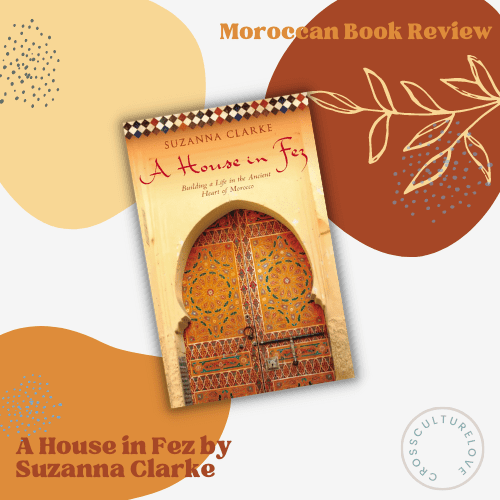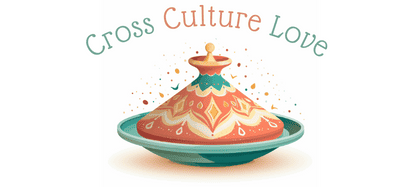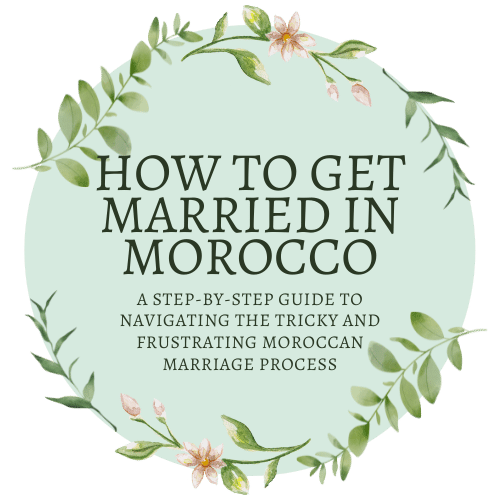
A House in Fez: Building a Life in the Ancient Heart of Morocco – book review
I recently decided to read a series of books set in Morocco, which lead me to A House in Fez. I have complicated feelings about A House in Fez: Building a Life in the Ancient Heart of Morocco by Suzanna Clarke and her husband Stacy (Affiliate Link).
What I loved about A House in Fez
First of all, as a lover of literature, and somebody currently living in Morocco, I, of course, thought the book was charming. Suzanna is a great writer, and she obviously has a deep love for Fez and respect for its ancient traditions and architecture. Suzanna and Sandy Clarke seem like lovely people and I’m sure they were a welcome addition to their neighborhood.
I like that the book wove in historical and cultural information about Fez interspersed between stories of their riad renovation. I learned quite a bit about Fassi history and even a few phrases in Darija that I didn’t know, which is really cool. I love interesting stories that teach you something new.
Similar to The Caliph’s House, A House in Fez does a good job of highlighting just how maddening Moroccan bureaucracy can be. The endless forms, offices, fees, requirements, and changing expectations is such a recognizable part of Moroccan culture. I haven’t bought a property in Morocco yet, but I can only envision the endless red tape associated with the confusing and tricky property, inheritance, and building laws.
A House in Fez: a clash of modernity and tradition
Overall, I liked this book. But there were a few things that gave me pause.
Suzanna touches on the idea that much of Fez’s historical architecture has fallen into disrepair and there’s this “that’s such a shame” mindset about this, but I don’t think she really emphasizes just how much of this is due to extreme poverty. Yeah, I’m sure people would love to have a beautifully restored courtyard, but they’re struggling trying to feed their families. Or the idea that ancient doors are sold off and “what a shame” they’ll likely be purchased in Marrakech to wealthy foreigners, but those doors were sitting there while families go hungry.
The impression that it seems like the outsiders, who come in and buy up the properties that the locals can no longer afford to maintain “appreciate” the architectural and historical significance more than the people who were born, raise, and molded by them. I don’t know if this was her intention, and I can’t imagine that it was, but it’s hard not to read through the lines and feel like there might be some subtle criticisms about the Moroccans not really “seeing” the “real” beauty of the Medina, when, in reality, they simply can’t afford to prioritize aesthetics or even basic maintenance.

I think, as outsiders in a culture, we run the risk of trying to decide what a community should value versus what they actually do. Suzanna discusses how many locals have gutted their homes of ancient architecture in pursuit of modernization, and that this is a great loss. But is it? Is it so important to hold onto old ways, old arts, old architecture if it doesn’t suit the needs of people now? I think you can value something without expecting (or mourning) the fact that others don’t. If a local can spend thousands of dollars artfully restoring something that doesn’t enrich their lives beyond historical aesthetics, why shouldn’t they prioritize modern conveniences?
The book asks many interesting questions about modernity versus tradition, just like Morocco is asking itself every day.
It’s a lot of construction talk
Okay, so, this was probably my mistake given the, ya know, title of the book, but I didn’t expect construction to be such a huge part of the book. But boy was it. I don’t know what a lot of the terms meant and there were no pictures in the book until the end so I spent a lot of time trying unsuccessfully to visualize what was going on.
If you’re into ancient Moroccan architecture and building, this book is for you. If you aren’t, it might be a skip. I would like to have learned more about the Moroccans, the relationships she made, or even more about Suzanna and her husband.
Ultimately, I think the lack of information we get about the author and her husband made this book, feel inaccessible. I literally couldn’t tell you more than a handful of details about the couple, so ultimately, I had to ask, “Do I care about this house?” The answer, unfortunately, is not really.
Conclusion
I liked this book for the most part, and I would definitely like to read another book by the couple and their experiences in Morocco. If you are passionate about Fez or ancient architecture, I think you’ll love this book. I hope Suzanna and Sandy are doing well and enjoying a lovely life in Fez.
What are your thoughts on A House in Fez? I’d love to hear them!






One Comment
Becky Stevens
Thanks for you feedback on the book. I like the very valid points you make.